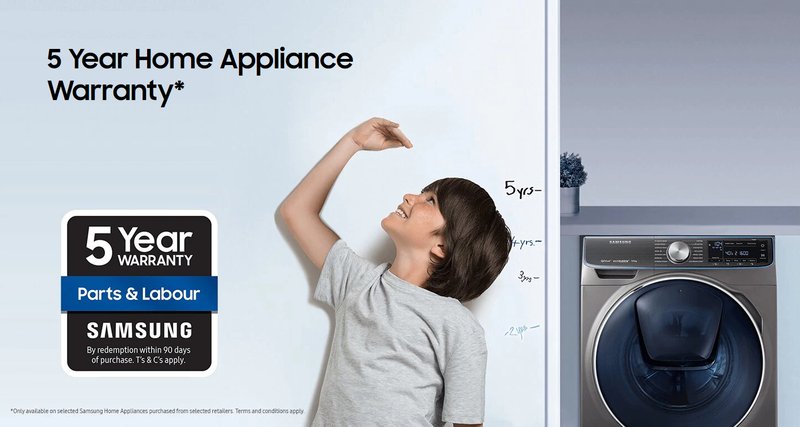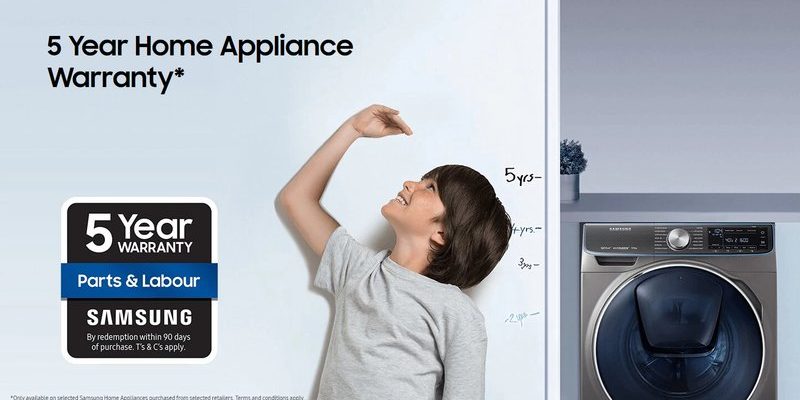
Let’s be real: appliance warranties are kind of like car insurance. You hope you never need it, but when things go sideways, you want to know you’re covered. Samsung’s kitchen warranties are pretty generous, but they do have fine print. And honestly, most folks only realize they’ve voided the warranty *after* something breaks and they’re scrambling for a fix. That’s why it’s smart to know, right from the start, how to keep your Samsung kitchen appliance warranty valid—and what common habits can make it disappear.
Know What Your Samsung Kitchen Appliance Warranty Covers
Before you can avoid voiding your warranty, it helps to know what it actually covers. Samsung’s kitchen appliance warranties usually protect you from manufacturer defects—think problems with materials or how the appliance was built, not issues from daily wear and tear or accidents. For example, if your new range starts sparking on its own or your fridge’s icemaker stops working right out of the box, Samsung’s warranty kicks in.
Here’s the thing: the warranty won’t cover everything. If you drop your fridge while moving it, spill bleach inside the oven, or tinker with the code in a smart appliance, you’ll probably be on your own. Samsung’s official documents spell out the details, but here’s the quick version:
- Manufacturer defects: Covered
- Accidental damage (drops, spills, pets, kids): Not covered
- Normal wear and tear: Not covered
- Unauthorized repairs or parts: Not covered
If you’re not sure about a specific problem, check the warranty card that came with your appliance or visit Samsung’s support site. It’s worth spending five minutes there to understand your safety net, so you’ll know when you’re covered—and when you’re not.
Proper Installation: Don’t Cut Corners
Honestly, this is where a lot of people mess up their Samsung kitchen appliance warranty—right on day one. Installing a fridge, oven, or dishwasher might seem straightforward (how hard can it be to plug something in, right?). But Samsung is picky: your appliance needs to be installed by a licensed professional, according to their official guidelines.
Why is this such a big deal? Samsung’s support team uses the installation record as proof that everything was set up correctly and safely. If you decide to “DIY” the install or let your friend’s cousin do it, you could be waving goodbye to your warranty. This is especially true if wiring, gas lines, or water hookups are involved—they want to know a pro handled it.
Here’s a quick tip: always save your installation receipt or paperwork. This is your backup if Samsung asks for proof later. If you ever move and have the appliance reinstalled, keep that paperwork, too. That bit of diligence can make a huge difference if you ever need to make a claim.
Always Use Samsung-Approved Parts and Accessories
Let me explain why parts matter so much. Imagine buying a luxury car and putting cheap, generic tires on it. Sure, it might run, but the manufacturer won’t be thrilled—and the moment something goes wrong, they might say, “Sorry, you didn’t follow the rules.” The same thing happens with Samsung kitchen warranty claims.
Using non-Samsung or off-brand parts—like water filters, replacement racks, or even batteries in smart displays—can void your warranty. Samsung designs their appliances to work with their own parts, often to make sure the fit is right and the appliance functions safely. If you swap in a third-party component, things might not work as expected, and any resulting damage almost always lands in your lap.
- Buy accessories and replacement parts from official Samsung dealers.
- Don’t try to “hack” or pair components that aren’t explicitly approved.
- If a repair tech recommends a non-Samsung part and you’re under warranty, get a second opinion.
It’s tempting to save a few bucks on generic parts, but honestly, it’s not worth risking your entire appliance warranty.
Avoid Unauthorized Repairs or DIY Fixes
Here’s where things get tricky for a lot of folks—especially if you’re handy around the house. Let’s say your Samsung dishwasher starts acting up, and you find a YouTube video showing exactly how to reset or troubleshoot the problem. Before you grab a screwdriver and start poking around, remember: performing unauthorized repairs, or even opening up the appliance, can void your warranty instantly.
Samsung expects repairs to be done by authorized service providers. These technicians are trained to handle Samsung’s unique systems, sync smart features, and use the right code for diagnosing problems. If you (or an unapproved local repair shop) replace a fuse, reset a control module, or run a battery of “unofficial” troubleshooting steps, Samsung may say you altered the appliance in a way they can’t guarantee anymore.
If your appliance is still under warranty, call Samsung support first. They’ll direct you to the right repair process. Sometimes, attempting to fix something on your own—even something simple—can give Samsung an excuse to deny a future claim. That’s why it’s always better to let their experts handle it, at least while the warranty is active.
Stick to the Official Cleaning and Maintenance Instructions
You might be wondering: How can cleaning your fridge or oven mess with your warranty? Well, Samsung is pretty specific about what kinds of cleaning products and methods are safe to use on their kitchen appliances. Harsh chemicals like bleach, abrasive pads, or even certain wipes can damage surfaces, seals, electronic controls, or display panels.
Samsung’s manuals usually include a list of do’s and don’ts for cleaning. For example: they’ll recommend mild soap and soft cloths, and warn you against any cleaners that could corrode or scratch surfaces. They might also include advice on how often to clean filters, reset water dispensers, or change the battery in a smart appliance’s digital display.
- Never use unapproved chemicals or scouring pads.
- Follow the recommended schedule for maintenance—like filter changes or gasket cleaning.
- If you’re unsure, look for the cleaning section in the manual or Samsung’s official online troubleshooting guides.
Skipping these steps or using the wrong products can actually count as “neglect” or “misuse,” which means your warranty won’t cover any resulting damage.
Don’t Tamper With Software, Firmware, or Smart Features
Smart kitchen appliances are everywhere now, and syncing them with your phone or smart home system can be tempting. But here’s the catch: modifying the operating system, running unofficial code, or trying to pair your appliance with non-approved apps can void the warranty.
Samsung’s warranty covers the original software and firmware, but if you try to “hack” the appliance for new features, or download updates from an unofficial source, you’re stepping into risky territory. For example, using a third-party app to control your fridge—no matter how cool it sounds—could leave you unprotected if something glitches.
Stick with official Samsung app updates and tools. If you run into pairing or syncing issues, call their support team. They can walk you through troubleshooting steps without putting your warranty at risk.
If it sounds too techy or complicated, it’s usually a sign you should leave it to the experts—especially while your warranty is active.
Keep Your Proof of Purchase and Registration Records
You’d be surprised how often warranty claims get denied just because the owner can’t find their receipt or didn’t register the appliance. Samsung typically requires proof of purchase—like a dated receipt or invoice—to confirm that your warranty is active and valid.
Registering your appliance (either online or using a registration card) is smart for two reasons: it speeds up service if you ever need it, and it acts as an extra layer of proof that you bought the appliance new and from an authorized seller. If you buy a Samsung oven or fridge secondhand, the warranty might not transfer, so always double-check those rules.
Here’s a mini-checklist:
- Keep your original receipt and installation paperwork in a safe place.
- Register your appliance on Samsung’s website soon after purchase.
- Take photos or make digital copies of your documents for backup.
If Samsung ever asks for proof, you’ll be ready—no hunting around for old receipts in kitchen junk drawers.
Understand Exclusions and Avoid Common Mistakes
Let me wrap this up with a warning about common mistakes that can void your Samsung kitchen appliance warranty—even if you’re trying your best. Know that “misuse” is a big umbrella term in most warranties. Overloading your dishwasher, putting heavy items on your range, or shutting the fridge door with your foot (don’t laugh, we’ve all been there!) can count as improper use.
It’s also important to avoid moving your appliance without professional help, especially if it needs to be reinstalled in a new home. If a moving company damages it, Samsung won’t cover the repairs.
And here’s something most folks don’t realize: using your appliance for commercial purposes (like in a restaurant or Airbnb) instead of at home is usually grounds for voiding the warranty. Samsung’s kitchen appliance guarantees are almost always for personal, residential use only.
If you’re ever uncertain if something is allowed under the warranty—like using a certain cleaning tool or trying a software reset—reach out to Samsung support before you act. It’s better to be cautious than to lose your coverage over a minor mistake.
Keeping your Samsung kitchen appliance warranty intact is mostly about following simple, common-sense steps—and not cutting corners just to save a few minutes or a few dollars. Use authorized installers, stick with Samsung-approved parts, resist the urge to “DIY” repairs, and keep your paperwork organized. Think of it like protecting an investment: a little extra attention now can save you a lot of frustration (and money) down the road.
If you ever have questions or run into trouble, Samsung’s support team is there to help. When you treat your new fridge, oven, or dishwasher with care—and respect the warranty’s boundaries—you’ll be in the best spot if something unexpected pops up. That’s peace of mind you can count on, every time you open the fridge or hit “start” on the dishwasher.
